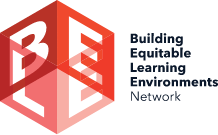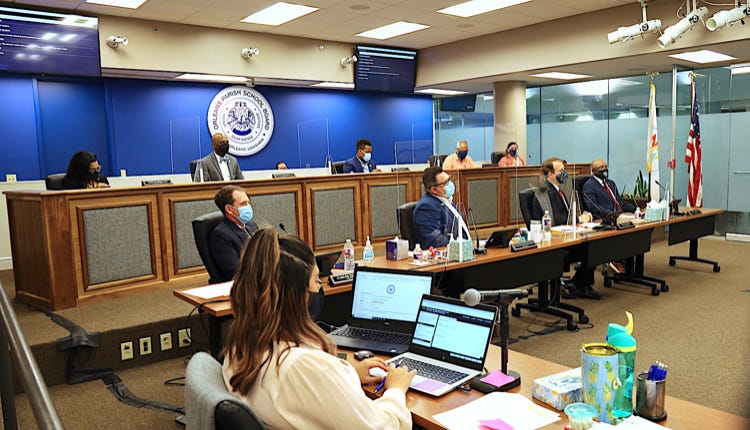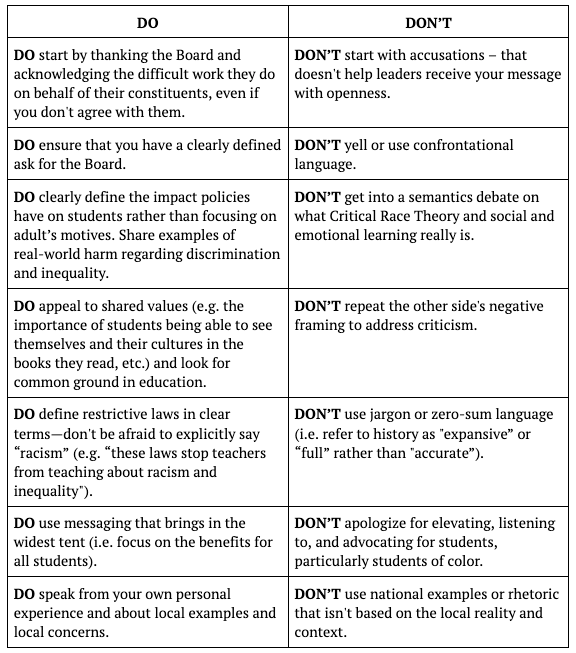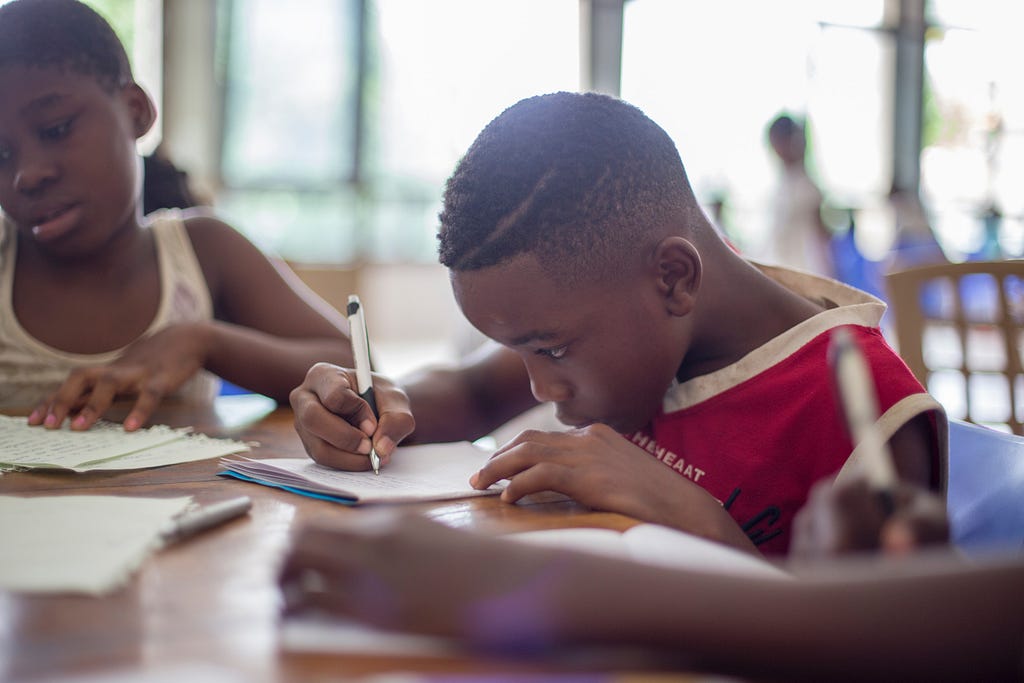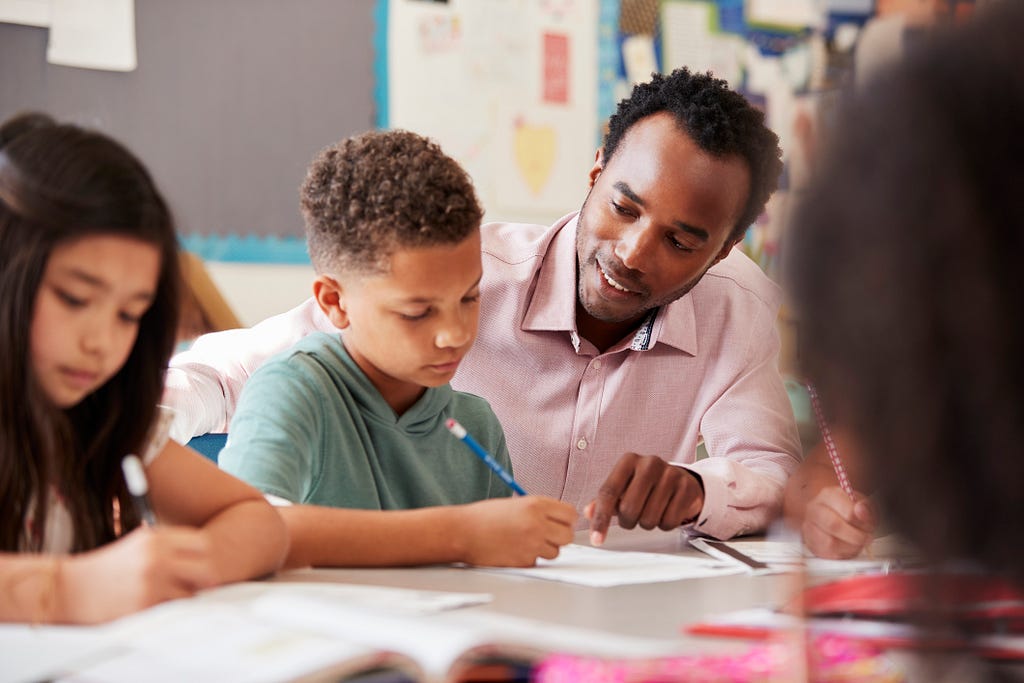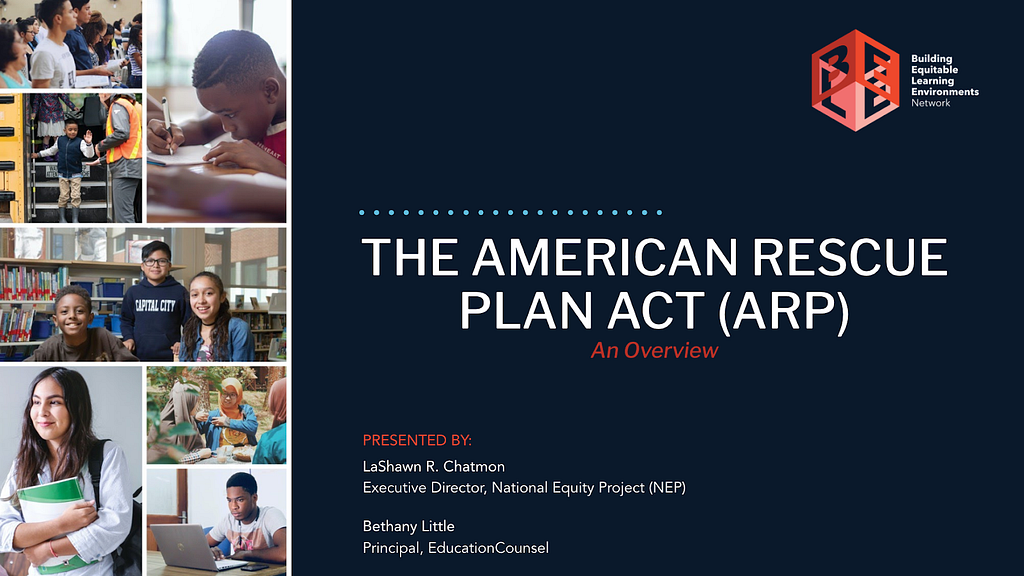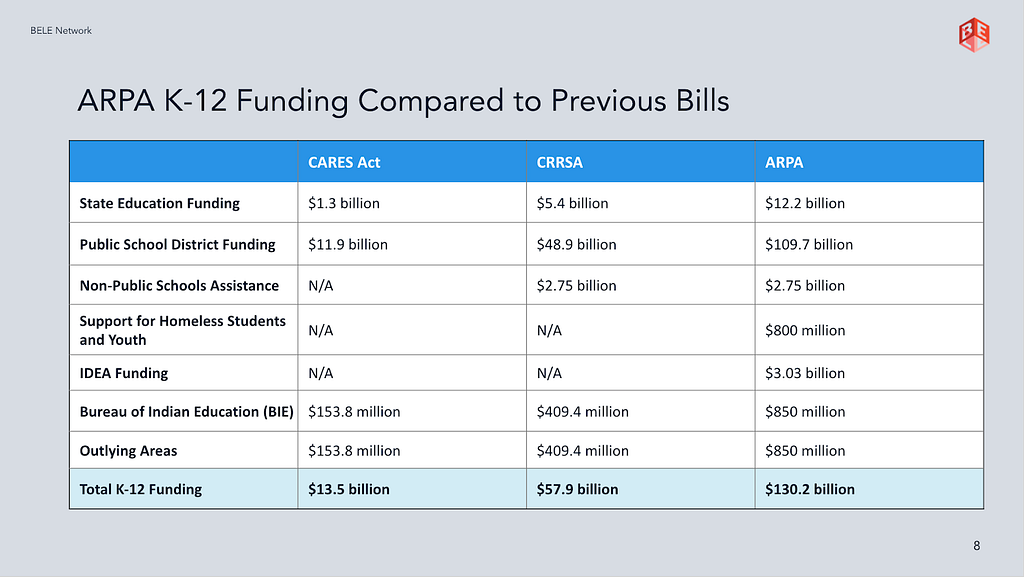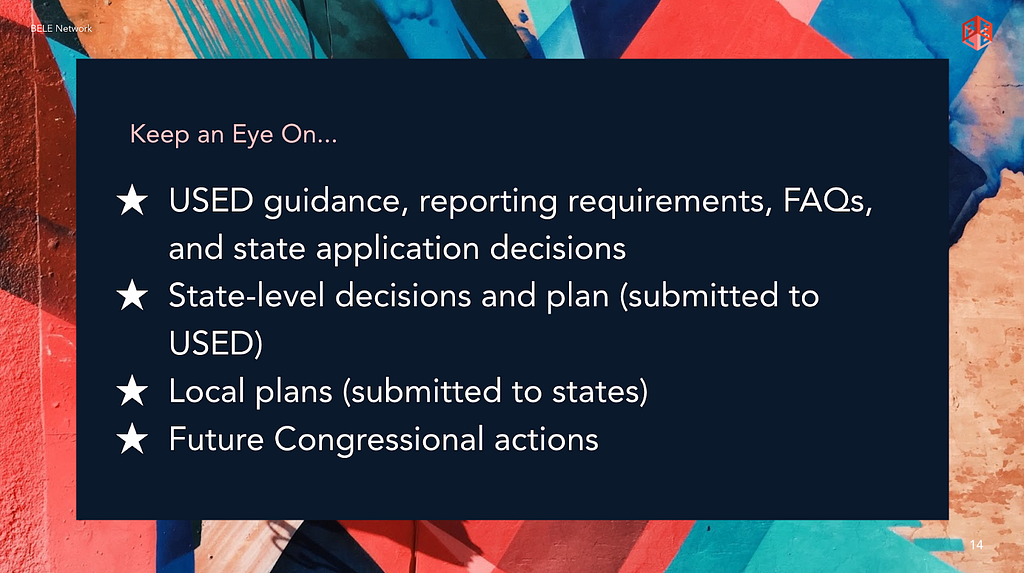Policies that create space for schools to better support their students
By David Nitkin, Partner at Transcend
Students, teachers, and schools have faced unprecedented trauma over the last two years. But across the country, countless communities are seizing this moment to not just recover from the crisis, but also use it as an opportunity for reinventing education long after the immediate impact of COVID-19 has passed.
Policymakers, too, can use this moment as an opportunity to embrace and encourage educational reinvention. Many creative policy innovations have emerged from the response to the pandemic, including new investments, regulatory flexibilities, and partnerships. Policy innovations like these can be powerful accelerants for communities seeking to implement new designs of school. Imagine what school communities could accomplish if policymakers lean into this moment and join them in prioritizing reinvention rather than aiming for a return to the pre-pandemic status quo.
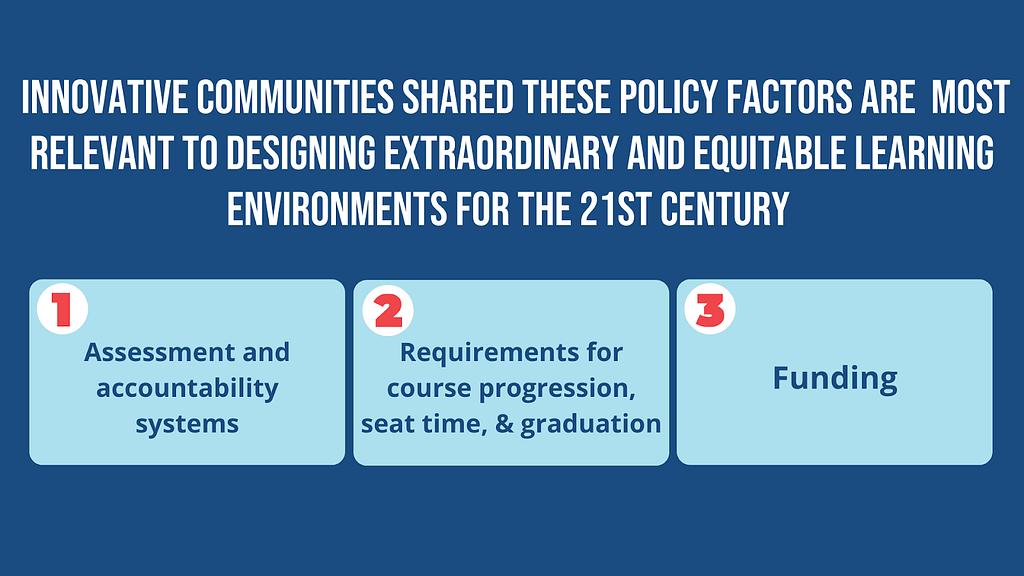
Which policies are most ripe for reinvention? The voices best positioned to answer that question are those in the school communities who experience those policies most directly. At Transcend, we’re privileged to directly support hundreds of innovative learning communities across the country in their efforts to redesign school, and are also connected to hundreds more through the Canopy project, a collaborative, field-wide effort designed to build collective knowledge about innovative schools. We recently asked these communities which policy factors were most relevant for their ability to design extraordinary and equitable learning environments for the 21st Century. These educators, representing voices from thirty-nine states and the District of Columbia, cited three policy factors as particularly crucial for their ability to plan and build new models for school:
- Assessment and accountability systems
- Requirements for course progression, seat time, & graduation
- Funding
Each of these factors has been significantly affected by the pandemic, generating new policies that offer exciting possibilities for the post-COVID world. And each offers opportunities for policymakers who are ready to help lead beyond recovery and toward reinvention.
Survey Results: Most Important Policies for Innovation
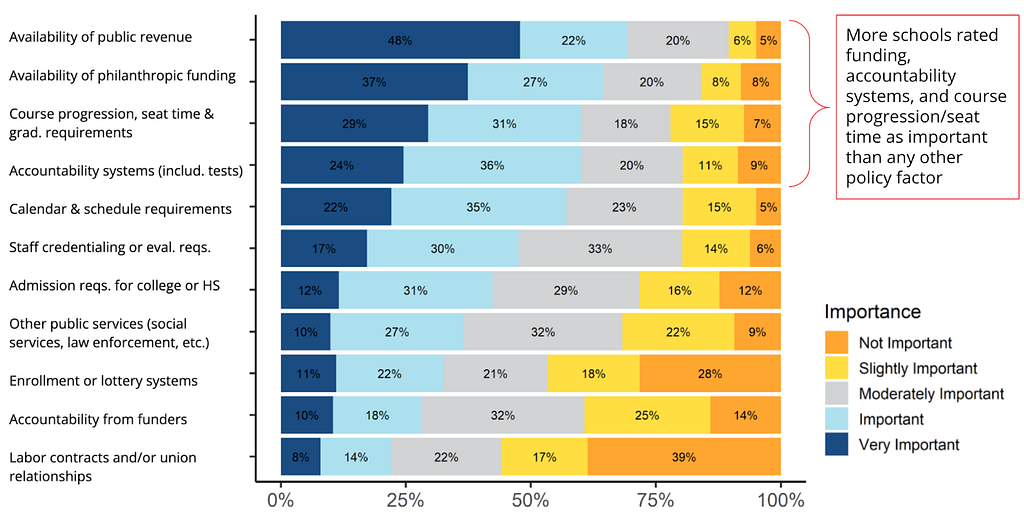
Assessment and Accountability Systems
Nearly two-thirds of the communities we spoke to cited testing and accountability systems as barriers to their ability to innovate. According to one principal, “Accountability systems hold back people’s willingness to try new things or unlearn aspects they have used in the past.” Another shared, “We’ve… seen regulations/accountability get tighter in the past decade which has decreased flexibility… this has led to some loss in creative programming decisions.” One assistant superintendent summed up much of what we heard when they told us, “If we continue an overreliance on biased assessments that do not measure deep learning, we will continue down this path to limited change in America.”
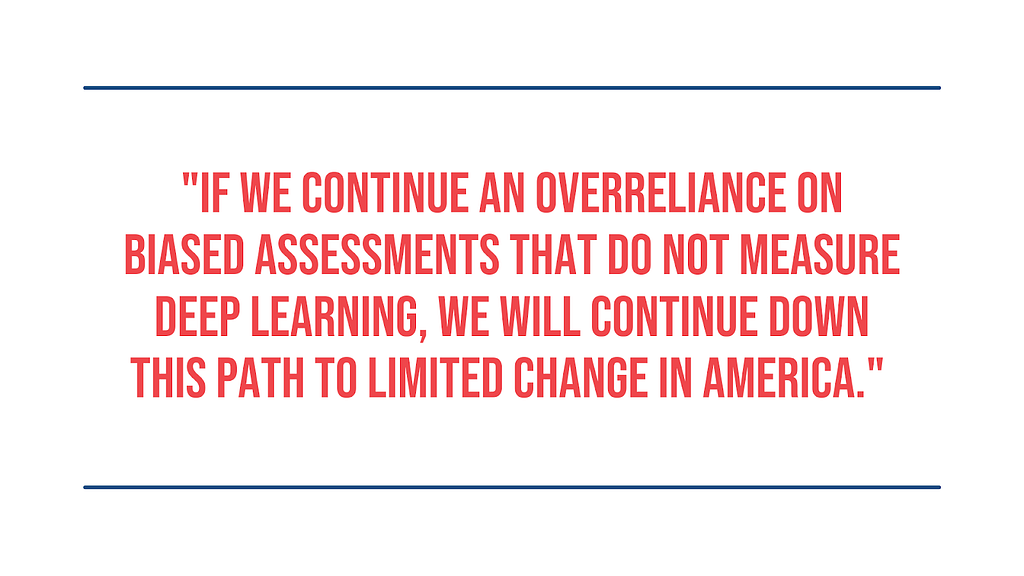
Perhaps one reason assessment and accountability systems were cited so frequently is that there are multiple ways they impact communities’ ability to innovate. Because they only assess reading, writing, and math, today’s state tests disincentivize communities from focusing on a more holistic curriculum. Their singular focus on grade-level content makes it harder for schools to customize instruction for students who need to learn above or below-grade level material. And most principals can describe in excruciating detail the overwhelming array of logistical tasks that testing imposes every spring — from creating new schedules to attending mandatory security trainings to building exacting materials management plans — all at the expense of time that could be focused on designing extraordinary and equitable learning experiences for young people.
State testing and accountability were massively disrupted by COVID. Nearly all end-of-year testing was canceled for the 2019–20 school year, and for 2020–21, the federal government provided significant latitude on when and how tests could be administered. This came on top of many promising innovations that were already happening across states, many of which leveraged the US Department of Education’s Innovative Assessment Demonstration Authority (IADA) or Competitive State Assessment Grant competition. Policymakers now have an opportunity to lean into this moment of reinvention.
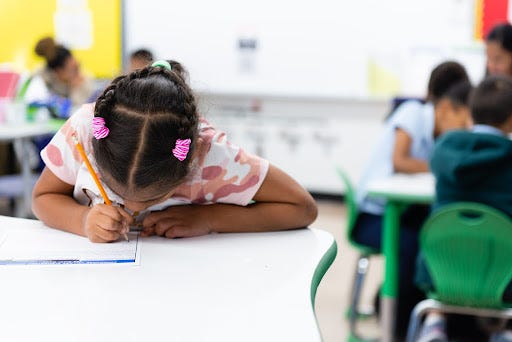
Because annual testing is mandated by federal law, any significant innovation would require waivers from the Department of Education. If the federal government chose to embrace an innovation agenda, there are several approaches they could take rethinking federal testing requirements. One approach would allow states to reduce the overall amount of testing, such as by permitting states to move from annual tests to testing in alternating years. Using administrative data from Missouri from the pre-pandemic years of 2016 to 2019, a team of researchers found that district and school growth estimates based on a single-year gap convey similar information to growth estimates based on data with no gap year. In other words, moving to alternate-year testing would have little or no negative impact on our ability to learn from state test data, but would dramatically reduce the administrative burden on schools. An alternate approach would be to transition to a sampling approach like the one used by NAEP, which would similarly allow for meaningful inferences about system-wide learning while reducing much of the testing burden experienced by students and teachers.
Federal policymakers could also consider offering states flexibility around the designs of the tests themselves. Under current federal policy tests are required to evaluate every student against grade-level standards, providing a powerful disincentive against customizing content for students who need to focus on above- or below-grade level material. Instead, federal policymakers could allow states to adopt adaptive assessments that incorporate standards from multiple grade levels to better measure growth during the year.
Some have argued that the policymakers should abandon mandatory testing entirely. But given the history of dramatic and destabilizing pendulum swings in education policy, it would be wiser to explore common-sense flexibilities that reduce barriers for community-level innovators without completely sacrificing the value that standardized tests provide for system-level learning and uncovering inequities. These waivers would also give states and local communities the “breathing room” to research and develop new generations of assessments that measure the broader range of outcomes and experiences that are most essential for the 21st Century, including problem-solving, communication, collaboration, and agency, and which might eventually come to replace today’s tests entirely.
Course progression, seat-time, and graduation requirements
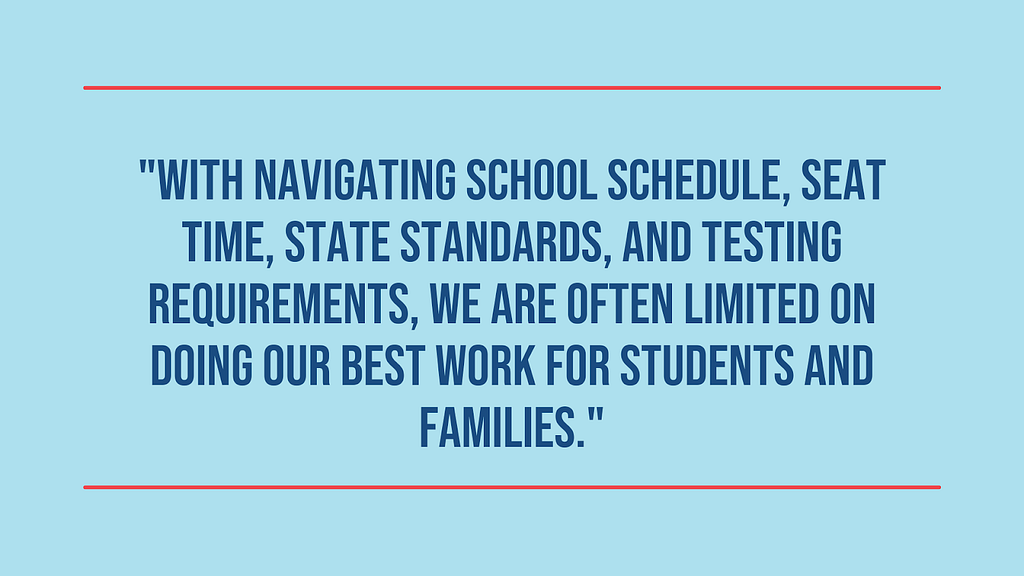
Course progression, seat-time, and graduation requirements were a second policy factor cited by innovative schools as crucial for reinvention. These industrial-era holdovers often dictate that all students must learn the same things, in the same place, at the same time, and pass a uniform assessment to demonstrate mastery. Not surprisingly, these inflexible systems are a significant barrier for communities seeking to create more personalized and customized student experiences. For example, the leader of Nashville Big Picture High School, a school in Tennessee, shared that “Our design [focuses] on personalization and student interests through internships and project based learning. With navigating school schedule, seat time, state standards, and testing requirements, we are often limited on doing our best work for students and families. Our hope is that policies can be revised to allow schools/districts more freedom to tailor our school’s structure to meet the students’ individualized needs.” A leader from Taos Academy Charter School in New Mexico shared the same concerns, stating “State policy on seat time and other [desired] flexibilities are in the way of providing personalized learning.”
Once again, the pandemic offers examples of policy innovations that emerged from the crisis and that visionary policymakers can now affirm and expand to enable more equitable and extraordinary learning models to flourish. For example, local policymakers in Oakland, California empowered Oakland Reach with the flexibilities they needed to offer personalized education through a family-led pandemic learning hub. Edgecombe County Public Schools in North Carolina also launched decentralized learning hubs in response to the pandemic, and saw such positive reactions from families and students that they are now exploring permanent transitions to hybrid models. However, models like these require policy flexibility so that students can earn credit when they learn not only in brick and mortar school buildings, but also in family-driven pods, out-of-school tutoring, and paid work or internships.

Policymakers should create space for these innovations by reforming seat-time and graduation requirements so that students can earn credit — and schools can receive funding — for a diverse array of meaningful activities, not just time spent physically in school buildings. Some states are already moving in this direction. For example, Oregon Administrative Code 581–022–1131 allows a school district or charter school to grant credit if a student demonstrates mastery through “out-of-school” work, presenting a portfolio of finished products, or passing a relevant exam. How many transformative new learning models could policymakers uplift by making such policies more widespread?
Funding for Innovation
The third policy factor that innovative communities highlighted as especially relevant for their ability to redesign schools was adequate funding to support the research, development, and implementation of new models. For example, the leader of Evergreen Elementary Charter School in North Carolina wrote that “We can and will do our innovative work within a variety of parameters (i.e., those marked less important) but public schools must receive adequate funding to support innovative work that often involves increased staff capacity.” Many innovators also bemoaned the need to devote precious time to fundraising, such as the leader of EPiC Elementary in Missouri, who told us “Funding is an issue for innovation. We are consistently writing grants to get the things that we need in our innovative site…. we spend a lot of time trying to find funding.”
That said, it isn’t simply a matter of more money. Since the start of the pandemic, Congress has authorized nearly $200 billion in new relief money for K-12 education. This funding has been vital for communities as they respond to and recover from the pandemic, but even with this critical investment, educators are still overworked, undersupported, and increasingly overwhelmed by a job that is fundamentally unsustainable in its current form. Sending more investments to schools without reinventing schools’ outdated, hundred-year old design is like using a hand bucket to bail out a sinking ship — a valiant effort that doesn’t fix the underlying problem.
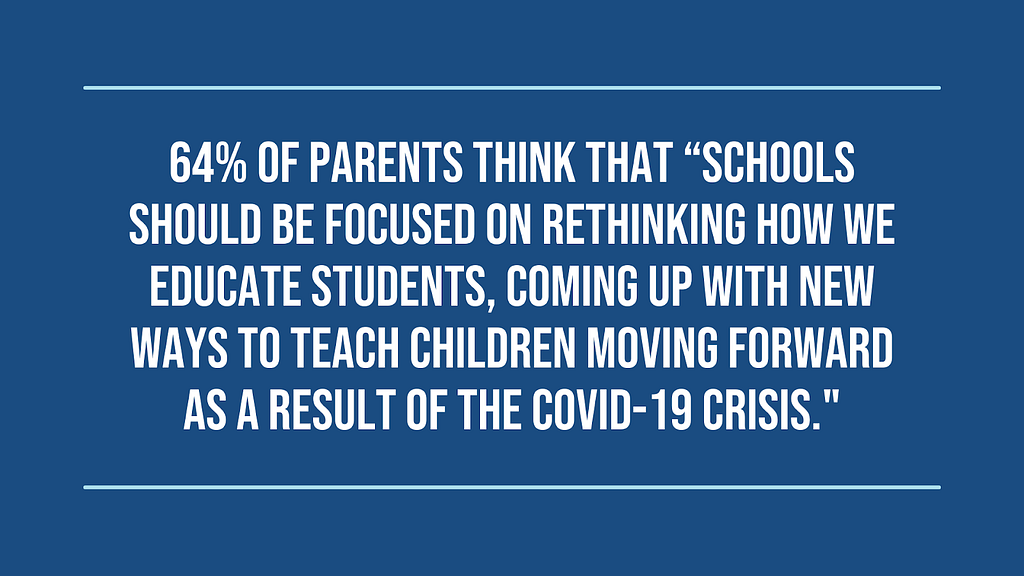
State policymakers should take advantage of their new influx of federal funding to offer innovation grants — some of which would go directly to schools — to develop new approaches or adapt existing ones. Investments in R&D could take many forms, including funding for school-based reinvention teams, creating system-level innovation funds that enable schools to access and adapt innovative models, or documenting and sharing the most promising new practices through networked innovation communities. These types of investments would help policymakers avoid the “fiscal cliff” that would come from using a one-time infusion of cash to invest in traditional inputs grounded in a pre-pandemic vision for school. It would also be in keeping with the desires of parents: a recent survey of families found that 64% of parents think that “schools should be focused on rethinking how we educate students, coming up with new ways to teach children moving forward as a result of the COVID-19 crisis.”
From Recovery to Reinvention

Educators across the country are working hard to move their communities from response, to recovery, to reinvention. Policymakers can’t afford to do any less. If they seize this moment as an opportunity for redesign, policymakers will do more than support and accelerate the pioneering efforts of innovative local communities — they’ll also send a powerful message that young people’s educational experiences will emerge from the pandemic more equitable and extraordinary than ever before.
Transcend is a national nonprofit that supports school communities to create and spread extraordinary, equitable learning environments. The organization was founded on a belief that we must reimagine schooling, using a community-driven approach, so all children can realize their infinite potential. Transcend pursues its mission by partnering directly with schools on design journeys while also sharing powerful models, tools and insights across the sector. To date, Transcend has worked directly with hundreds of schools and leaders in over 30 states, and has influenced thousands more. Ultimately, Transcend strives to fuel significant leaps in education so all young people can thrive in and transform the world. Learn more at www.transcendeducation.org .
